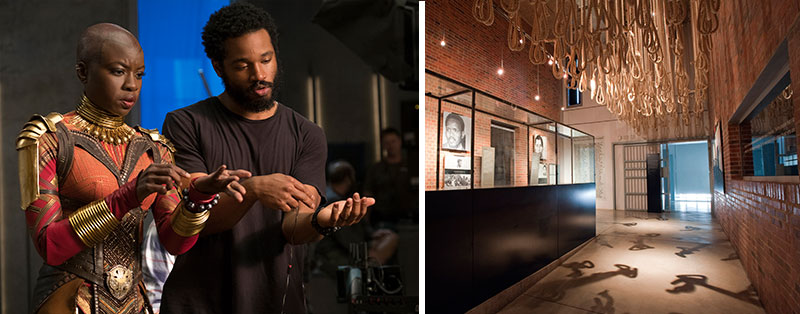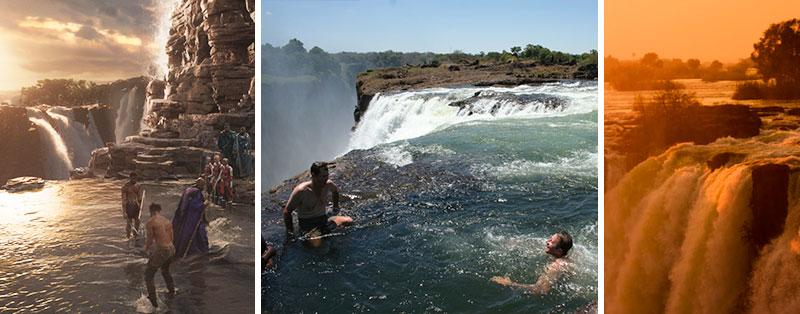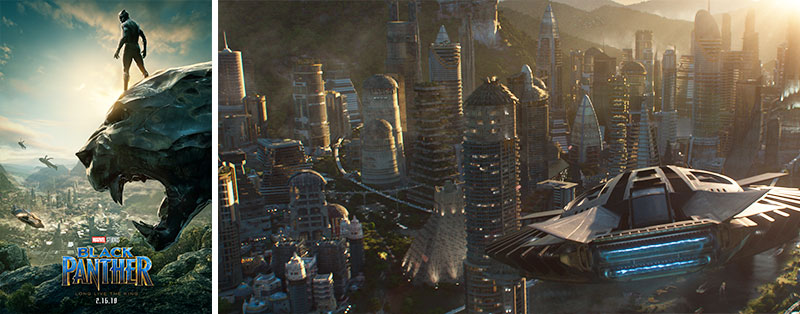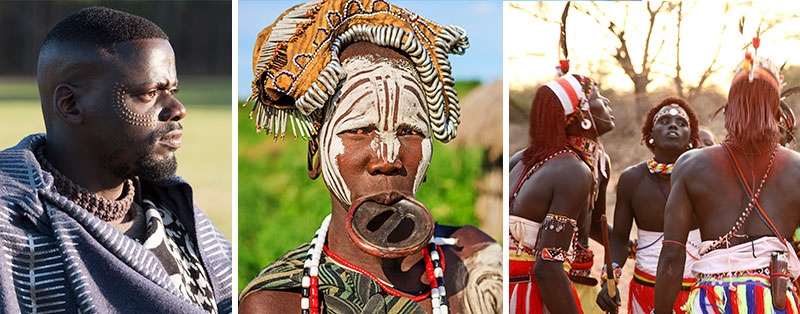Black Panther Locations that Inspire Africa Travel
Before filming Marvel’s blockbuster Black Panther, director Ryan Coogler traveled to Africa for the first time. Although the Kingdom of Wakanda is fictional, he said it was important to first experience the continent to make sure he authentically represented the film’s African setting. The influence of cultures and places from across Africa is evident on-screen. We’re taking a look at the way Africa was reimagined in Black Panther locations and characters. These sites and experiences should definitely go on your travel list.
Coogler and his team spent much of their Black Panther research trip in South Africa and the KwaZulu-Natal, the historic home of the Zulu Nation. From the ancient history of tribal struggles for power, to the more recent defeat of apartheid, the story of Africa comes full circle in South Africa. In Johannesburg, a visit to Soweto offers a unique “then and now” look at the discriminatory history. Spending time in the powerful Apartheid Museum is also a must. Regardless of your own history, you will emerge with a thoughtful understanding of the complex past in South Africa and beyond.

Dianai Gurira (General Okoye) with director Ryan Coogler | an Apartheid Museum exhibit, Johannesburg
Watching T’Challa during his two fateful trials at Warrior Falls, we couldn’t help but be reminded of one of Africa’s greatest natural wonders: Victoria Falls. Found on the border of Zambia and Zimbabwe, the landmark’s local name, Mosi-oa-Tunya, directly translates to “The Smoke That Thunders”. Victoria Falls is a UNESCO World Heritage site and a hot destination for adrenaline junkies – no hand-to-hand combat necessary. Bungee jumping, zip-lining, and a private helicopter flight over the falls let you experience its full majesty. If you’re feeling extra adventurous, take a dip in the swirling Devils Pool at the top of the falls, just inches from the tumbling water’s edge.

T’Challa faces Erik Killmonger | Devil’s Pool at Victoria Falls
While there’s no vibranium technology to be found, Addis Ababa might be as close to Wakanda’s hidden city as you can get. Addis is a major modern metropolis; it hosts the headquarters of the United Nations Economic Commission for Africa and the home base of the African Union. Glittering glass-and-steel skyscrapers in the financial district, an elevated light-rail, and the chaotic hubbub of its streets and markets certainly recall elements of Black Panther. Tech-savvy Shuri would feel right at home here among the blossoming population of university students from all across the world.

Beyond Addis is the gateway to rural Ethiopia and the unrivaled culture of the Omo Valley. Black Panther costume designer Ruth E. Carter mentions a few Ethiopian tribes among her inspirations for the fashions and styling of the Wakandans. From major characters to background citizens, it’s easy to pick up on the details inspired by real cultures from east and southern Africa. The Mursi, Surma, Hamer, and Menit peoples in the Omo Valley are among those that still practice body modification with lip plates or scarification. We also recognized the hairstyles of the Himba, a nomadic society in Namibia who cover their skin and hair with stunning rust-red ochre.

Connie Chiume as Mining Tribe Elder | Traditional Himba style
The armor and layered jewelry of General Okoye and the Dora Milaje echoes the styles of the Samburu and Masai tribes in Kenya and Tanzania. Vibrant reds, blues, floral patterns, and plaids are prolific in Black Panther and throughout nearly every African country and culture. Even the modern fashions worn on film can be found in the boutiques of local designers in fashion-forward Brazzaville and Cape Town.

Daniel Kaluuya as W’Kabi | A Mursi lip plate | Samburu men in warrior dress
Finally, if M’Baku is your main man, find the spirit of gorilla god Hanuman on gorilla treks in the mountains of Rwanda and Uganda. Both regions differ greatly from the Black Panther locations depicted; think sweltering jungles instead of the snowy Jabari lands. M’Baku and his clan would likely opt to shed their furs in the mountains of Volcanoes National Park and Bwindi. June and July are the best months to go tracking in these areas, getting up-close to the wild families of mountain gorillas as they groom, eat, and play. You’ll be guided the entire way by trackers and rangers who have lived and worked in these regions their whole lives, and know each family of gorillas at first glance.
Black Panther Locations
Ready to travel to Africa to discover Black Panther locations come to life? Contact your luxury travel consultant to customize your own journey.
Black Panther images courtesy of Disney/Marvel Studios.
